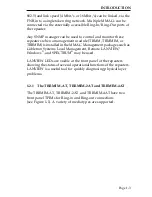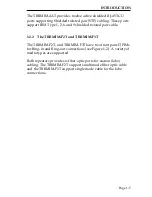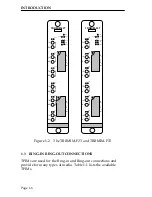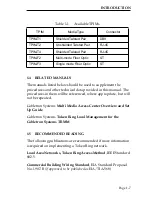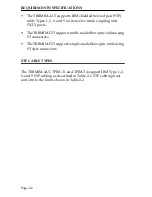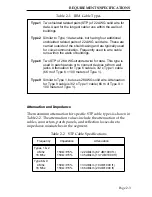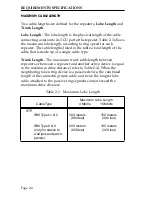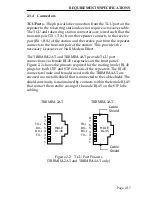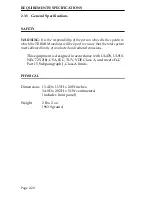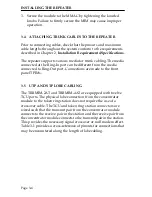
REQUIREMENTS/SPECIFICATIONS
Page 2-9
•
Fiber optic budget is the combination of the optical loss due to
the fiber optic cable, in-line splices, and fiber optic connectors
(the loss for each splice and connector is typically 1 dB or less).
•
Propagation delay is the amount of time it takes a packet to
travel from the sending device to the receiving device. Total
propagation delay allowed for the entire network is 25.6
µ
sec. If
the total propagation delay between any two nodes on the
network exceeds 25.6
µ
sec, then bridges should be used.
•
When using single mode fiber optic cable, segment lengths up
to 10 km are possible if system budgets are met. However, the
IEEE 802.5J specification allows for a maximum length of 2 km.
2.1.2
Trunk Cable Lengths
The maximum trunk cable length between repeaters or between a
repeater and another active device is equal to the maximum drive
distance (refer to Table 2-7). When the neighboring token ring
device is a passive device, the combined length of the connecting
trunk cable and twice the longest lobe cable attached to the passive
ring segment cannot exceed the maximum drive distance.
Table 2-7 Maximum Drive Distance
Cable Type
Ring Speed
4 Mbit/s
16 Mbit/s
Fiber Optic - Multi-mode
2 kilometers
2 kilometers
(6562 feet)
(6562 feet)

